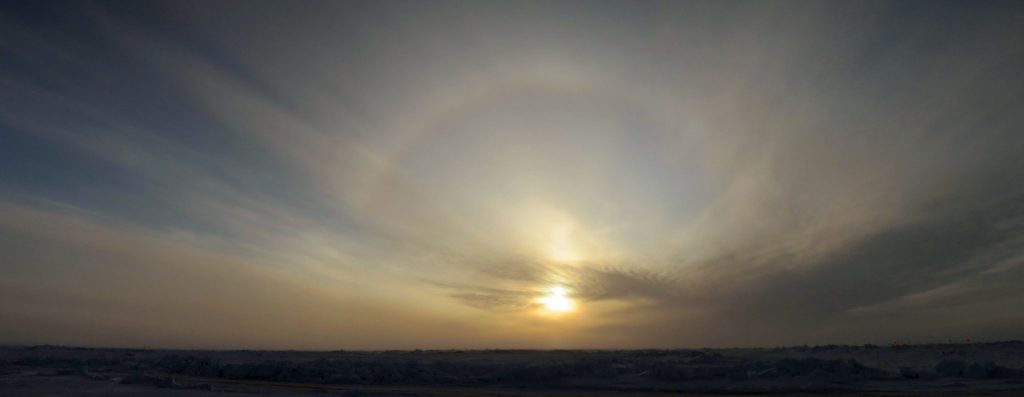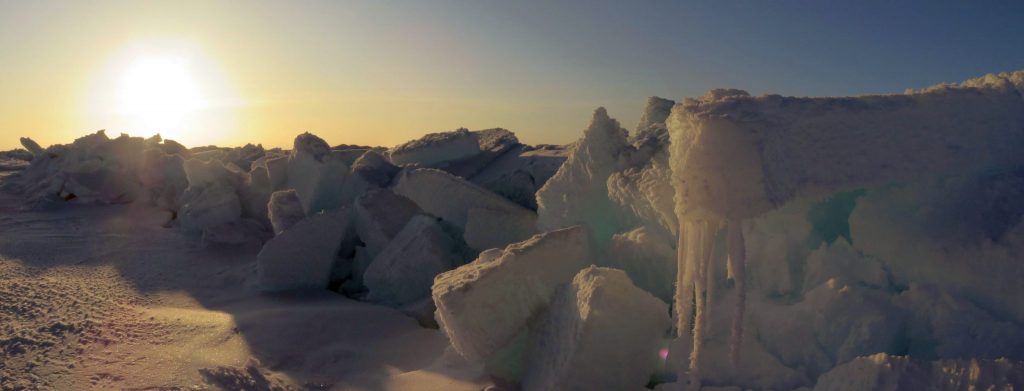MOSAiC Leg 3 – Part 2 of 5
by Julia Schmale
What a welcome by the winter Arctic! Not enough that temperatures plummeted to below -40 °C with a wind chill of -60°C during the first week of March when we arrived at the MOSAiC central observatory (CO). Exactly six days after we had taken over for leg 3, the CO suffered several major cracks that soon opened into leads. Naturally equipment and infrastructure had to be rescued. In addition, several days of storms made it almost impossible to work outside due to the blowing snow causing low visibility, a condition in which spotting polar bears at a safe distance is not possible. The month of March felt definitely like a rollercoaster ride to us. But let’s take the events one after the other…
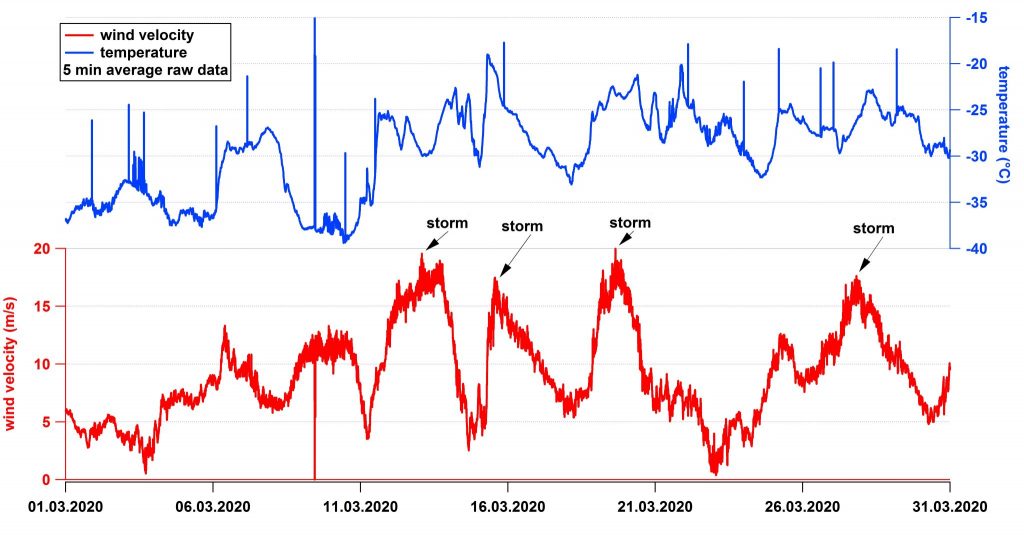
Having spent a month mostly inside a ship, the Kapitan Dranitsyn, starting to work in extremely cold temperatures outside is not easy. The slightest wind will cause any bear skin to get cold immediately. For that reason, we were equipped with lots of polar clothing, including a red survival suite, which is basically an overall that provides flotation, many layers of fleece and wool to wear underneath, a number of different hats and face masks, and very warm boots. Walking about in such a dress feels rather clumsy, but it was worth it, since no team member suffered from any serious cold injury. However, the warm clothing is only effective for so long, and we had to split our outdoor working time into roughly 2 hour slots to stay safe.
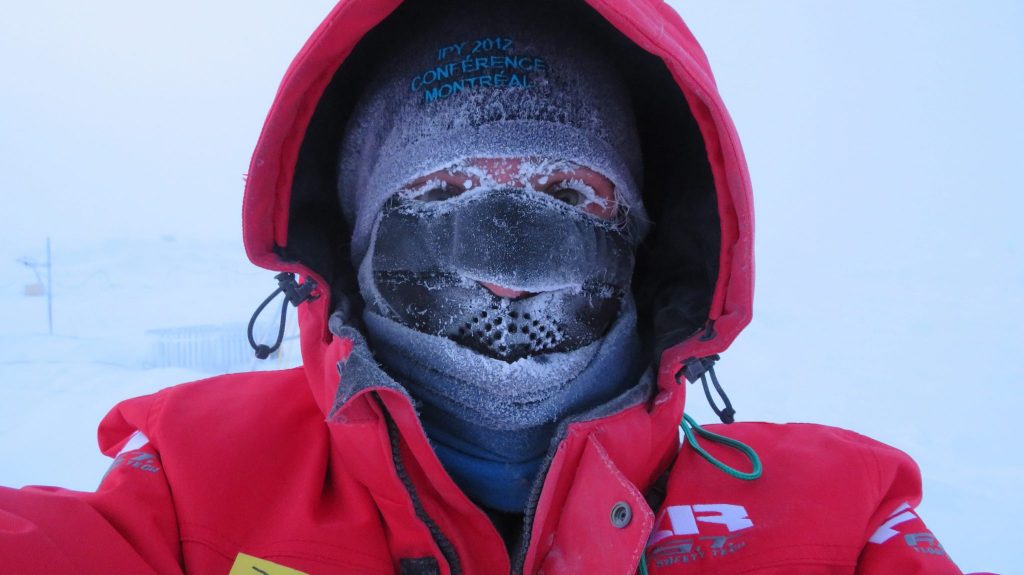
Having a way back to the ship, our safe haven, without serious obstacles is important. What that means and how to deal with that was a lesson we had to learn rather quickly. On 11 March, the first major crack appeared right at the stern of Polarstern. All teams who were on the non-ship side of the crack had to return at once. The pictures below show why. Within less than three hours the crack had opened to become a lead which was not crossable at that time. To not miss such events and to inform all parties on the ice, a bridge watch was kept by one professional logistics team member and a volunteer scientist at all outdoor working times with regular radio communication.
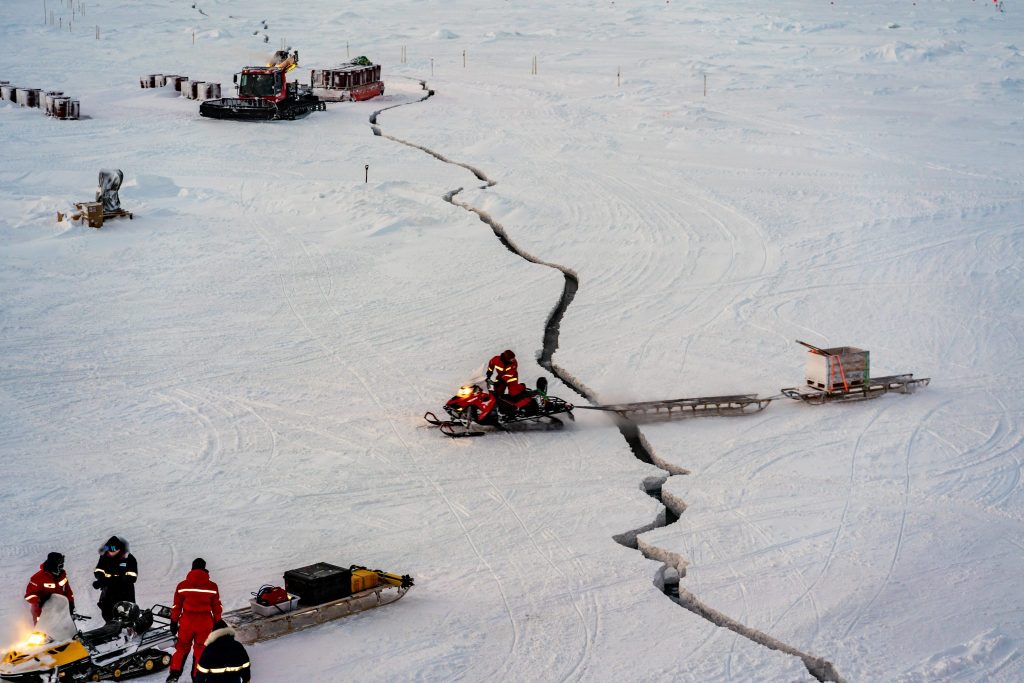
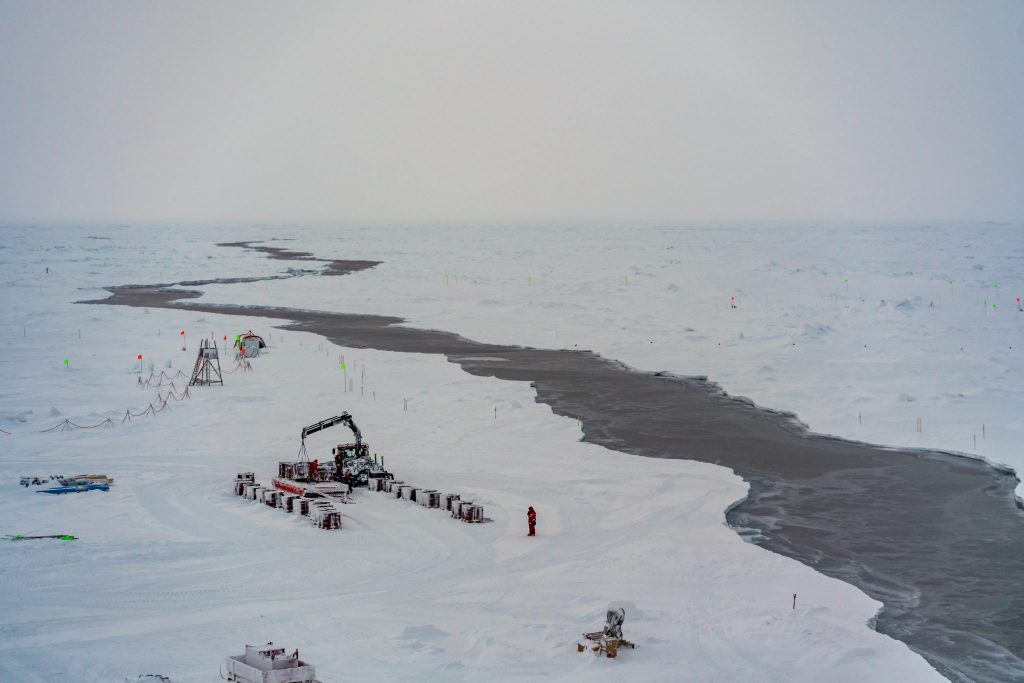
Above lead went right through the under-ice optical transect area which had to be redefined afterwards. A similar incident happened only three days later near Met-City, the location where many meteorological parameters were measured. Access via the ice was impossible even though Met-City was less than 500 m away from Polarstern. Weather conditions permitted a helicopter flight to rescue some instrumentation that was in immediate danger of falling into the water, and to shut down instrumentation, because the power line had to be cut. The opening lead moved Met-City away from the main power hub and the cable was under strong tension and could have ripped away our instrumentation.

Open leads can either freeze over, and at a freezing rate of roughly 12 cm per day in early March, walking across them 24 hours later was sometimes possible; or leads close again and form ridges. Ridges can be crossed on foot as well, and then our instrumentation was accessible again. But they might also eat up instrumentation while they form. The process can be very quick, meaning a ridge can form within an hour, which makes responding to it difficult. In the case shown below, luckily just the fence was swallowed and not the instrument, which was taken away beforehand.
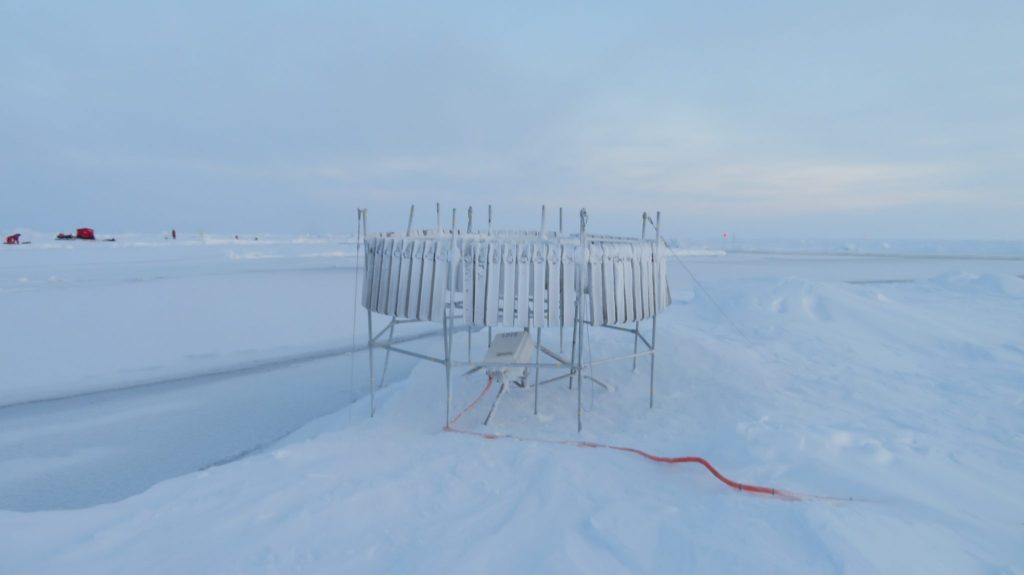
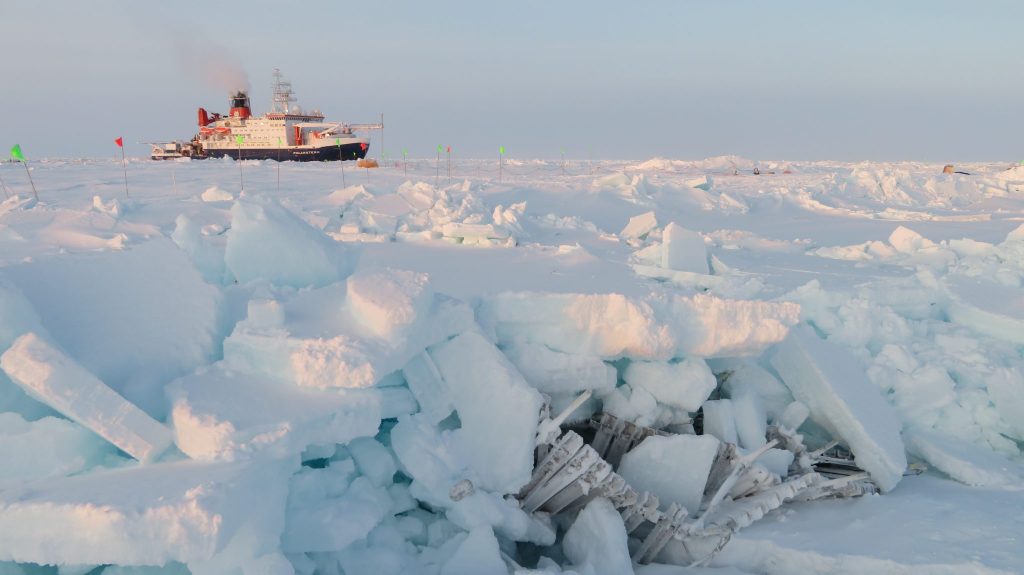
Even though lead formation meant more trouble than none to our installations on the ice, it is a process that we actually came to study. After these first two events, we slowly got more and more accustomed to the dynamics of the ice and found ways to make things work despite broken power lines and interrupted roads. Open leads contribute a significant amount of water vapor to the atmosphere in winter. When they open and steam with the sun is at the right angle, it even looks like the Arctic is on fire. More humidity in the air means that the atmosphere has a different radiative transmissivity which in turn is important for the energy balance.
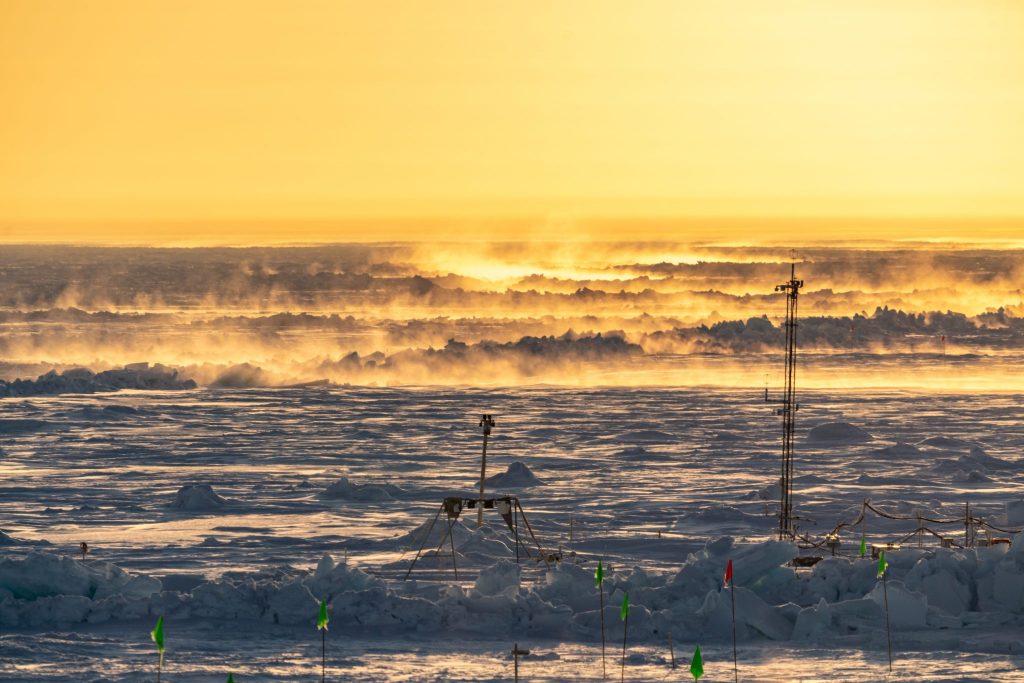
Another aspect, particularly my project is interested in, is in how far open leads contribute to sea spray aerosol abundance. Sea spray forms when bubbles burst in open water. Bubble form when waves break, i.e. there is white cap formation, or when the water splashes against the ice. On 27 March, a lead opened in stormy conditions right under the bow of the ship producing white caps. There could not have been a better opportunity to study this winter time aerosol source process.
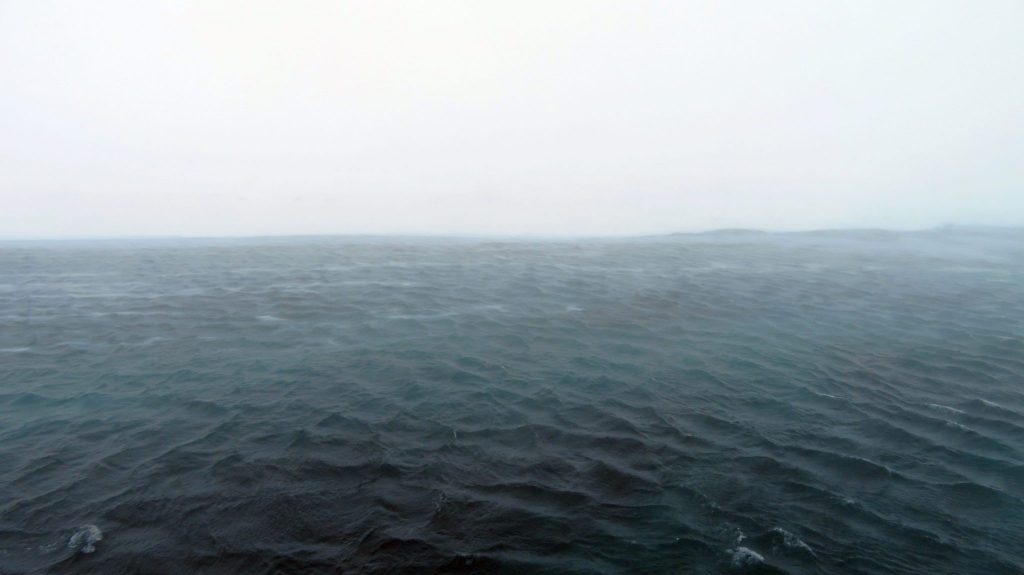
When such storms hit, life on the floe had to calm down, because outdoor working conditions were not always suitable. In many occasion, we could however pursue some smaller tasks on the ice close to the ship. But staying together and communicating regularly was important as the visibility sometimes dropped below 20 m. On such days, most of the outdoor activities had to be cancelled.
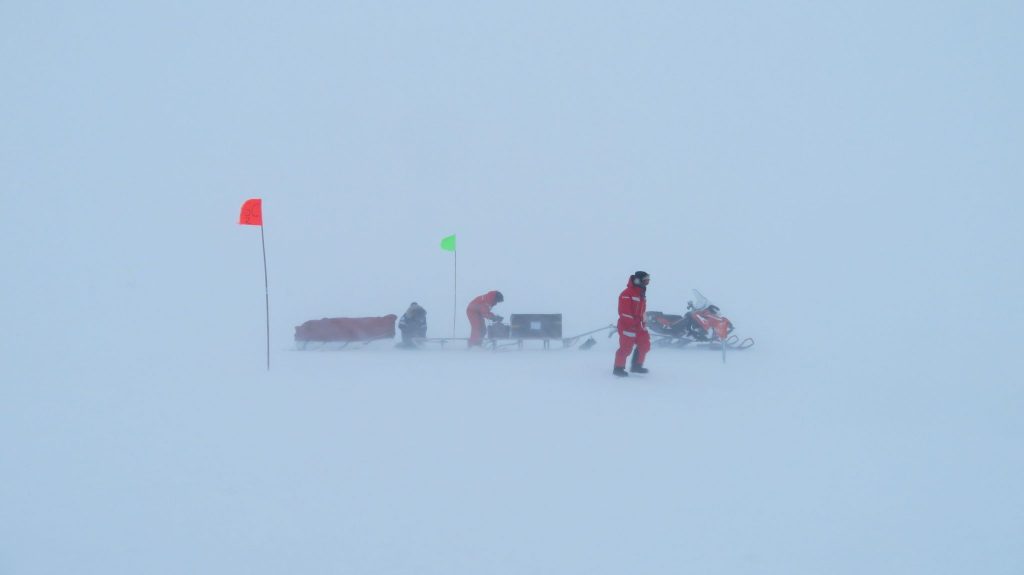
By the end of March, most of the storms had passed for the season and we were granted beautiful weather.
